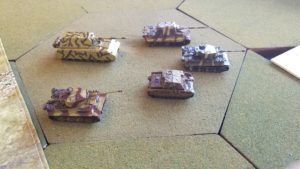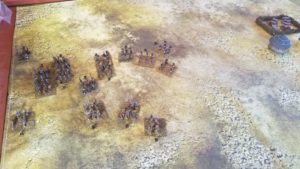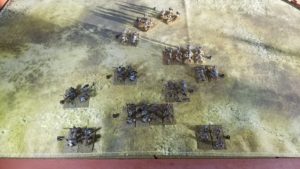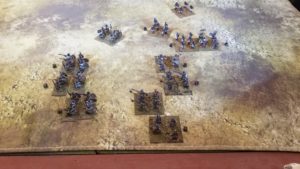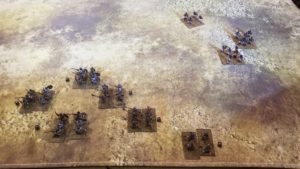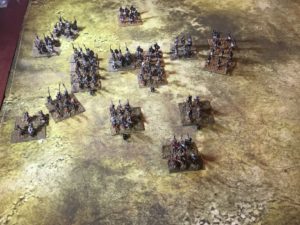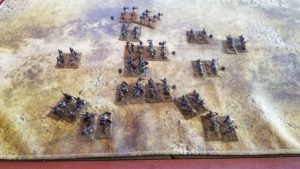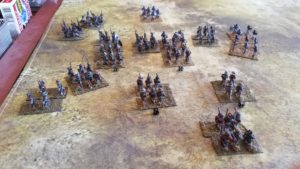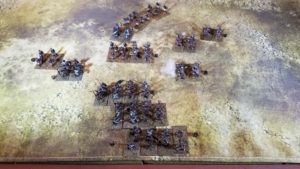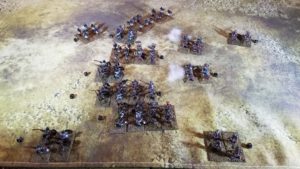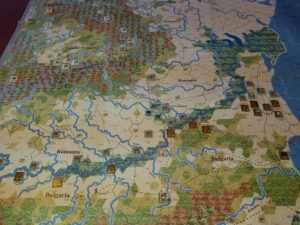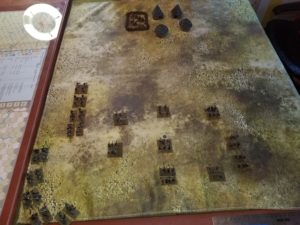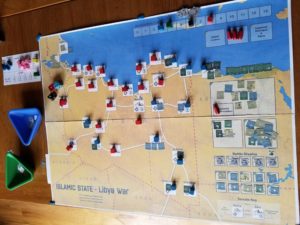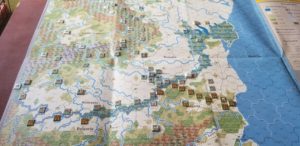The Sun Never Sets (TSNS) has been languishing on the shelf for a number of years. Tried its Gallic Brother In Arms – French Foreign Legion – a few years back, but that effort didn’t even make it to the punch counters phase.
Some 45 Minutes later……
Did some quick checking and there are a number of games in this series. Not only French Foreign Legion, but also The Sun Never Sets II and First Afghan War. Each of the games was published in Strategy & Tactics magazine. After rummaging through boxes stashed under the gaming table, I discovered the latter two. So, I have the entire set. At times like this I feel like an aging acid-addled rock star who, when an interviewer plays an obscure track, mutters “Did I play on that”?
To continue this digression, I’m now faced with a standard gaming conundrum. Since I’m immersed in the common rule set, do I start working through the entire set of games? Or, will this only result in a feeling of obligation and avoidance, with a yearning to try something else?
TSNS has an interesting system. It can’t be considered a hex and counter simulation, but it has more depth than initially meets the eye. The campaigns covered appear to be push-overs for the British Empire. But distances, logistics and objectives can make each campaign a challenge.
Units are categorized by weapon type and morale. Weapons include five different types of artillery (rockets!), two types of machine guns, and four different types of rifles. For morale, units are classified as Veteran, Line, Fanatic and Rabble. The first three receive positive die roll modifications for both fire and melee combat.
Individual units can be organized into Forces. Headquarters (Leaders) can be assigned to Forces. A Headquarters has a tactical rating effecting Battle (combat) and Rally, with a strategic rating influencing Movement. Larger forces have a greater combat strength, which is reflected in the Combat Results Table (CRT). Force organization also effects Logistics.
The basic turn sequence is straight-forward, even though I’ve had some real problems keeping the mechanics straight. These Turn Segments are:
- Events
- Reinforcement/Replacement
- Movement
- Battle
- Logistics
- Rally
Events are randomly generated by 2xD6 rolls applied to a chart. Some results are campaign specific, others generic for the colonial period. Reinforcements and Replacements are game specific and involve either the deployment of specific units or strength factors by unit type.
While movement rates are printed on the counters, the ability to move and length of move is determined by a D6 roll for each Force at the beginning of the segment. Possibilities include no movement allowed, regular movement, forced march with an increased movement allowance, forced march with attrition (elimination of one unit in the force) and “Mad Dash” with even greater maximum movement. A Headquarter’s strategic rating may be added to modify the die roll.
The Battle Segment is somewhat involved. Tactical Initiative (comparing each side’s D6 roll modified by tactical rating of the Headquarters) determines which side proceeds first. This is important since results are applied immediately. Battle has three rounds, two of which involve fire combat. The third round is melee. During fire combat, units with the same morale rating, weapon and unit type are grouped to fire a “Volley”. Artillery fires during the first round, with rifles (all small arms) during the second round. Many native units do not have small arms, and can only “volley” during melee combat. Units with small arms also “volley” during melee. Specific modifiers are applied to the D6 rolls for results on a CRT specifying the number of units eliminated and/or demoralized. The side with the greater losses during a Battle may have to retreat if those losses exceed fifty percent. Forces retreating through an enemy controlled Zone of Control take additional losses.
Forces are supported by either Supply Trains or Foraging. Foraging Forces must roll to determine if they suffer demoralization. Supply Trains are expended after providing support. The number of trains is limited, and their staging/sequencing is important for a steady advance with minimal attrition.
Demoralized Forces may Rally. The ability to rally is influenced by their morale and Headquarters.
I’ve started the March To Peking scenario, covering the 1860 Arrow War. The basic game and scenario specific rules have provided a good experience, and after a number of fits and starts I am getting comfortable with the game’s flow.
I am looking forward to incorporating the optional rules in this and other scenarios. These include Engineering operations, Sieges, Fog of War, Attack From March, Ambush, Evasion, Atrocity and Fair Play, Negotiations, and Civillians.
My next post will offer an After Action Report (AAR).
